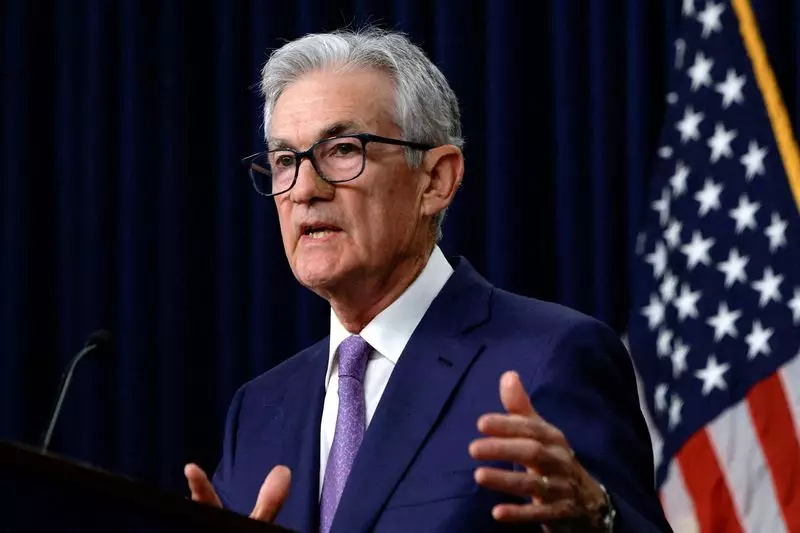The dynamics of monetary policy often oscillate in response to changes in the political landscape. The recent decision by the Federal Reserve to reduce interest rates by 25 basis points has sparked renewed discussions about how upcoming political changes, particularly with the incoming administration under Donald Trump, could influence future monetary decisions. In a recent press conference, Fed Chair Jerome Powell reflected on these potential shifts, acknowledging the risks but maintaining a posture of independence for the central bank.
Powell’s commentary highlighted the complexity of balancing fiscal policy initiatives proposed by the new administration with the Fed’s ongoing responsibilities to manage inflation and employment rates. The incoming president’s plans, which include significant tax reductions and stringent tariffs on imports, raise questions about their potential effects on domestic economic growth. While Powell emphasized that these policies would be considered in the future, he underscored that immediate decisions regarding interest rates would remain insulated from political pressures.
This assertion of independence underscores a crucial characteristic of central bank governance—that monetary policy decisions should remain unaffected by the transient whims of political leadership. However, history has shown that the Federal Reserve often has to navigate through the intricacies of political promises and economic realities, especially when anticipating the direct effects of proposed fiscal policies on the economy.
To better understand the potential impacts of the incoming administration’s plans, analysts from Deutsche Bank revisited the December 2016 Federal Open Market Committee meeting. This meeting unfolded shortly after Trump’s election and serves as an essential reference point. At that time, the Fed had a clear focus on fiscal policies and predicted a shift toward more expansionary economic strategies.
The parallels between 2016 and the current situation are noteworthy. Just as the Fed was grappling with uncertainty surrounding the timing and specifics of Trump’s policies then, it finds itself in a similar position now. Many officials were already contemplating the implications of proposed fiscal measures on their rate outlooks. They recognized the risk of stronger growth which, in turn, could necessitate a tightening of monetary policy sooner than anticipated.
There is a growing concern that Trump’s trade policies, particularly his intention to impose sweeping tariffs, could trigger inflationary pressures that might force the Fed to reevaluate its approach to interest rates. Some economists argue that these policies could alter consumer pricing dynamics, leading to an environment where increased costs of imports would eventually be passed on to consumers, creating a cycle of inflation.
Such inflationary trends would complicate the Fed’s goal of maintaining economic stability and could potentially result in a tense relationship with the Trump administration. An echo of this was felt last week when Powell firmly rejected speculation that Trump might attempt to remove him from his position. The possibility of a legal confrontation loomed should such an effort transpire, reflecting the broader struggle between maintaining central bank autonomy while responding to the machinations of political power.
Trump’s intentions regarding Powell remain unclear; although he previously expressed willingness to let Powell continue to serve if he believed the Fed Chair was making sound decisions. Yet, the administration seems divided on the approach towards the Fed, with advisors holding varying opinions about how they should engage with monetary policy decisions. This internal disagreement could foster an atmosphere of uncertainty affecting not only the Fed’s strategies but also market confidence.
As economists and policymakers weigh the implications of impending changes to the Fed’s structure and leadership, the focus remains on driving down inflation without causing disruptions within the broader economy or jeopardizing labor demand. For both the administration and the American public, these evolving dynamics will be critical to determining the trajectory of the economy in the years to come.
The intersection of political change and monetary policy presents significant challenges for the Federal Reserve as it seeks to foster economic stability amid potential disruption. As we inch closer to the end of the year and the final meeting of the Fed, the deliberations surrounding interest rates will likely become more complex as they weigh the impacts of proposed fiscal policies against the backdrop of ongoing economic conditions. It remains essential for the Fed to uphold its independence while navigating this delicate balance, ensuring that monetary policy decisions are guided by economic fundamentals rather than political pressures. The journey ahead is fraught with uncertainty, but the importance of sound, independent policymaking has never been more pronounced.

